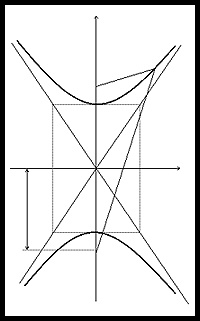How hyperbole helped come up with a new rating system

Hello.
My dear reader, today I will share with you an idea that you will be able to use in your projects for free, although I will be glad to be grateful in any form.
The last few posts I talked about rating systems and in the first note on this topic was the system + 1 / -1 . Very easy to understand, from being loved by many. I want to improve it, or rather improve the counting algorithm. Visually, the user will not change anything, he will still have a choice of two options "+" or "-".
')
So, let's begin. To begin with, we will agree on one convention - often there are topics in which the number of pluses or the number of minuses is incomparably higher than the average. It is certainly pleasant to their authors, but it is completely useless for developers and users. It is much easier to introduce absolute plus and absolute minus, which is extremely difficult to achieve, but each of the topics tends to one of them constantly.
So let in our system the absolute plus is “+100”, and the absolute minus is “-50”.
Now we will agree on the following - each plus or each minus carries a total amount of different values, which are calculated depending on which person has put a mark on the account. That is, the later the person voted the less his vote is counted. This will save us from the effect of the crowd.
The calculation formula is very simple. For the first plus mark "+50", for the first minus "-25", for the second plus - "+25", for the second minus - "-12.5". And so on, each time the score decreases by two.
What this will lead to - each topic has its own limit around which the score and dance. In principle, an assessment of any topic can be a sequence of pros and cons. So for example, the sequence “++ - + - - - + - +++++” will be equal to 51.36 with kopecks (thousandths can be ignored), and its opposite “- - + - +++ - + - - - - - "is equal to 46,97.
Why such a small difference? In the first sequence, the number of pluses is twice the number of minuses, and in the second, vice versa, and the difference is not big, it didn’t even go to minus, why?
Because it is a completely different system. It should change the user's psychology a bit. One plus is more expensive than many minuses. Although one minus will not let the topic fly high, no matter how many advantages it has been set for.
Examples (I will say in secret, the number of pluses is important in the sequence, and not where they stand):
"- - - - -" - -48.43, "+ - - - -" - 1.56, "++ - - -" - 31.25, "- - +++" - 50, "- ++++" - 71.87 , “+++++” - 96.87
The system is not ideal, you still need to work on calculating the step that is now 50 / n (it is possible to weave the logarithm here so that the fall is smooth), but now you can see advantages in the form of a victory over the “crowd effect”.
I would be glad to read any comments and suggestions.
PS and by the way, do you know where the hyperbole is? ;)
Source: https://habr.com/ru/post/30309/
All Articles